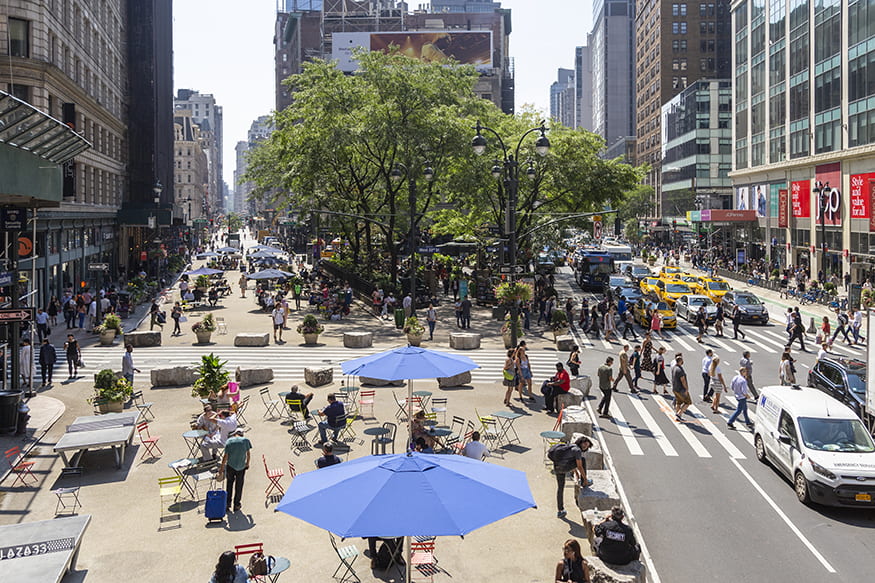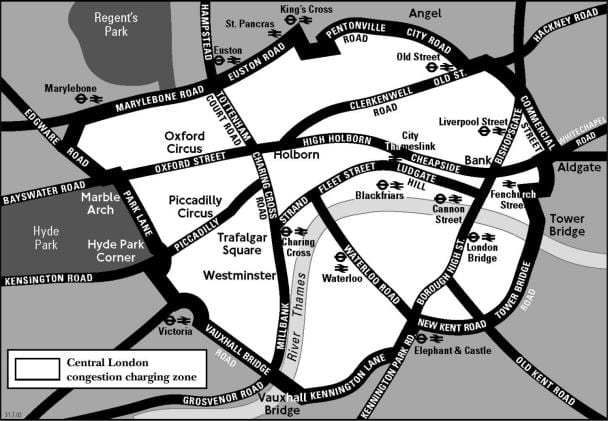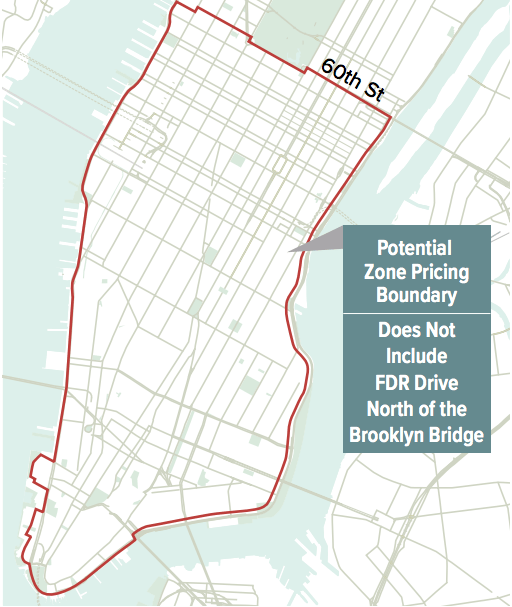
A city for the people, by the people, but actually for automobiles? The streets of our great city are dominated by cars and trucks, and pedestrians are forced onto small and crowded sidewalks. Shouldn’t our city be more accessible and useable for… people? Cities, by their economic definition, are the clustering of humans to form a settlement and economically benefit from their density. Isn’t it time we invest in our human infrastructure against car infrastructure, and not our car capital? This is what leads me to believe in the necessity for New York City to enact its Congestion Pricing plan.
From the point of view of an urban economist, congestion pricing in New York City will increase its appeal as a place to work and live. Fewer cars on the streets will give the city cleaner air to breathe, more room to walk and enjoy the city’s many amenities, and take some of the allotted space for cars back to its residents. The only way to further develop this capital is by making a healthier city with fewer carbon emissions, less traffic, and more open streets for businesses and residents to use. The first cities were created along rivers and oceans to allow for the creation of ports for trading. But how, over the course of history, did cities develop, and what evidence from the past will be the key for future city growth? This is what Gerald Carlino explores in his 2011 article “Three Keys to the City: Resources, Agglomeration Economies, and Sorting” from Business Review.
It is a very interesting piece, but the end of the article reveals some interesting data. For modern cities to grow they need amenities for residents to enjoy, so that they can offset higher costs of living found in suburban and rural areas. Cities with double the number of attractions and amenities to other cities had 2.2% and 2.6% growth in the 1990’s and 2000’s, respectively. The growth of consumer agglomeration economies, economic growth through a better quality of life. Everyone benefits from fewer car accidents, less noise, and decreased air pollution. Currently, New York’s experiences are limited by its automobile traffic, air contamination, and dirty and congested streets. While it may be hard to envision a carless downtown, we can look across the pond to London for inspiration.
 Image 1 – The London Congestion Charging Zone (Source: Transport for London 2006)
Image 1 – The London Congestion Charging Zone (Source: Transport for London 2006)
Enacted over twenty years ago, the city center of London put a charge of £5.00 for any car entering the defined charging zone (as shown above). The information below can be cited to “The London Congestion Charge” by Jonathon Leape. Congestion and excess traffic got the newly formed London city government to create a plan to get fewer cars downtown, residents defined congestion as their number one reason to not go downtown. Those who needed to go downtown could use their smartphones or go to retail outlets to purchase passes to register to drive, and the charges were enforced by cameras.
Positive results were seen immediately. Between 2002 and 2003, there was a 12% decrease in all total vehicles downtown, with a 34% decrease in personal automobiles. Public transit use into the downtown increased 4%. Over 70% of local businesses stated that the zone has positively affected their business. And when the total social costs and benefits were measured, the pricing zone netted £67 million in 2005 alone. A city that is cleaner, less congested, and safer for pedestrians, provides a net social benefit. Making cities more attractive to pedestrians will help local businesses as well as attract new residents. Reducing automobile use will help a city grow.
 Image 2 – Proposed NYC Congestion Zone (Source: Fix NYC)
Image 2 – Proposed NYC Congestion Zone (Source: Fix NYC)
New York City does have a Congestion Pricing Plan set up, but it has been stalled by the previous presidential administration and now the new Biden Administration has been playing catch-up. It does seem that the plan is moving forward: on March 30th, 2021, the Biden Administration has given the green light to an Environmental Assessment of the project which was delayed by the former President. This is much-needed good news. There was an interesting piece from The New York Times from March 22, about how the only way the MTA can truly rebound is if riders come back, which they predict may not happen in full until 2023. And even then, with the rise of technology that allows workers to work from home (saving costs for firms), ridership may not be at the same level. If New York City is to bounce back after the pandemic, it must not rely on suburban commuters to drive into the city to their offices and leave (so earning money in the city, and spending outside of its borders), it must allow tourists and residents alike to be able to enjoy Times Square or Downtown or anywhere else below Central Park without the dangers of cars.
If the tie to enacting Congestion Pricing is fully tied to public transit improvements, the policy will be short-lived. Instead, if the Pricing plan is shown to be good for neighborhoods – and in fact, closing streets outside of the Manhattan Zone and other boroughs through OpenStreets, which has been poorly enforced – because it increases consumption and profits for local businesses, we will see more positive results like in London. A more financially and socially successful city, one that is more economically sustainable and powerful, will only be found in a city that allows its residents to enjoy its parks, museums, restaurants, and everything in between without worrying about the negative externalities of cars. We must make this future happen.
For those of you trying to figure out the cultural reference in this article’s title comes from, yes, it is from The Dark Knight Rises (2012). No, we do not support Bane’s actions on how to reform a city.
Cover Image Source: NYC DOT